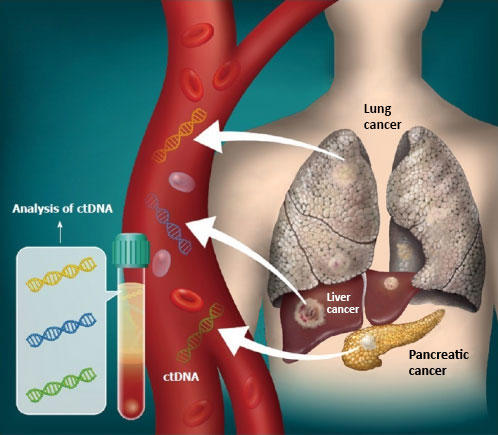A new publication from Opto-Electronic Advances; DOI 10.29026/oea.2025.240250 , discusses on-chip multi-channel near-far field terahertz vortices with parity breaking and active modulation.
Vortex beams with helical phase wavefronts can carry orbital angular momentum (OAM) and have promising applications in high-capacity communication, information processing and high-resolution imaging. With the further development of terahertz (THz) technology in the fields of communication, radar and substance detection, devices for light-field regulation, especially vortex beam generators, have become the core of these applications. Metasurfaces exhibit an outstanding performance of wavefront engineering capability at subwavelength scales and micro-nano integration, so that it has been widely used to control vortex beam in most wavebands (including the THz band). To improve the capacity of information carrying and processing, there is a continuing demand to manipulate more wave modes within a single device. Therefore, achieving multi-channel multiplexing, multi-function integration and dynamic reconfiguration of devices has become a research focus.
In recent years, based on metasurfaces, researchers have realized the generation of free-space vortices (FVs) and plasmonic vortices (PVs), which are 2 distinct spatial modes for transporting information. On-chip near-far field multiplexing mechanism provides an approach for devices with multifunctional integration, but the refined mechanism and devices for multiplexing near-far field vortices have been rarely reported. For vortex metasurfaces constructed with geometric phases, OAM modes are always coupled with spin angular momentum (SAM), resulting in the parity conservation of vortices, that is, the topological charges are parity symmetry (±), which reduces the control freedom. To solve this issue, the propagation phase is usually introduced to achieve the spin decoupling. However, the different phase accumulation laws stemming from near field surface wave propagating and far field diffraction pose challenges for realizing OAM parity breaking in near-far field and a higher degree of manipulation freedom. Furthermore, the active reconfigurable ability also counts for the device application. Therefore, the development of efficient active control mechanisms on the basis of multiple multiplexing vortex channels will construct more attractive functional devices.
The research team from the Institute of Modern Optics at Nankai University proposed an on-chip liquid crystal (LC) integrated terahertz vortex metasurface with active regulation. Through the cascades of dielectric and plasmonic helical metasurface, multiple independent vortex channels with spin multiplexing and near-far field spatial multiplexing are constructed, in which PVs and FVs with broken OAM parity are generated efficiently. Moreover, the active switching of vortex modes can be realized by applying an external bias voltage to the LC layer.
As shown in Fig. 1, the device mainly consists of a helical dielectric metasurface, an LC layer and a helical plasmonic metasurface. Based on the scheme of cascading metasurfaces, the near/far field vortices can be excited with high purity through spin-orbital angular momentum coupling and photon state superposition. The structures of two metasurfaces are carefully designed, introducing both the spin-dependent geometric phase and the spin-independent propagation phase distribution. Through different phase accumulation and symmetry breaking mechanisms, the parity breaking of far-field and near-field OAM can be realized simultaneously. The obtained topological charge numbers are no longer constrained to odd and even (±) values, but all positive integers with different values. As shown in Fig. 2, the device can obtain 4 and 8 distinguishable vortex modes in the near field channels and the far field channels, in which PVs and FVs carry 4 and 6 different topological charges respectively, with the mode purity of over 85% on average and the isolation degree up to 11.9dB and 19.5dB.
This generic cascading and controlling strategy expands the vortex function of the metasurface to all near-far field channels in full space, improving the device freedom, and providing a solution to overcome the tunability limitation of passive devices. Highlights could be listed as follows, the correlation of near/far field phase distribution can be bridged by the plasmonic metasurface, thus 2 PV channels and 4 FV channels are constructed. For this single-layer metallic helical structure, the asymmetric on-chip propagation phase leads to OAM parity breaking in the near field, but parity conservation for the far field diffraction vortices. Then, by cascading the dielectric metasurface in the front, its inversion asymmetric structure will introduce an additional asymmetric propagation phase distribution, which is the key to breaking the OAM parity conservation in the near and far field simultaneously. It is worth noting that LC shows obvious anisotropy in the THz band, and can be flexibly oriented by electric and magnetic fields, etc. Fig. 3 shows the quasi-continuous dynamic evolution process between two vortex modes to achieve active switching and modulation, and the dynamic modulation ratio reaches up to 70% in experiments. This device with multilayer cascaded metasurfaces and LC integration allows the flexible and dynamic manipulation of THz field both in free space and on chip, which is expected to promote the development of integrated photonic systems.
By combining spin multiplexing, near/far field multiplexing and active control technical means, this work supports parallel excitation and active manipulation of different vortices with high purity and low crosstalk. It paves the way for realizing efficient and compact terahertz on-chip multi-channel devices, and holds great promise for applications in THz high-speed communication, intelligent perception and computing.
Keywords: terahertz / optical vortex / plasmonic metasurface / near/far field / multi-channel / liquid crystal






